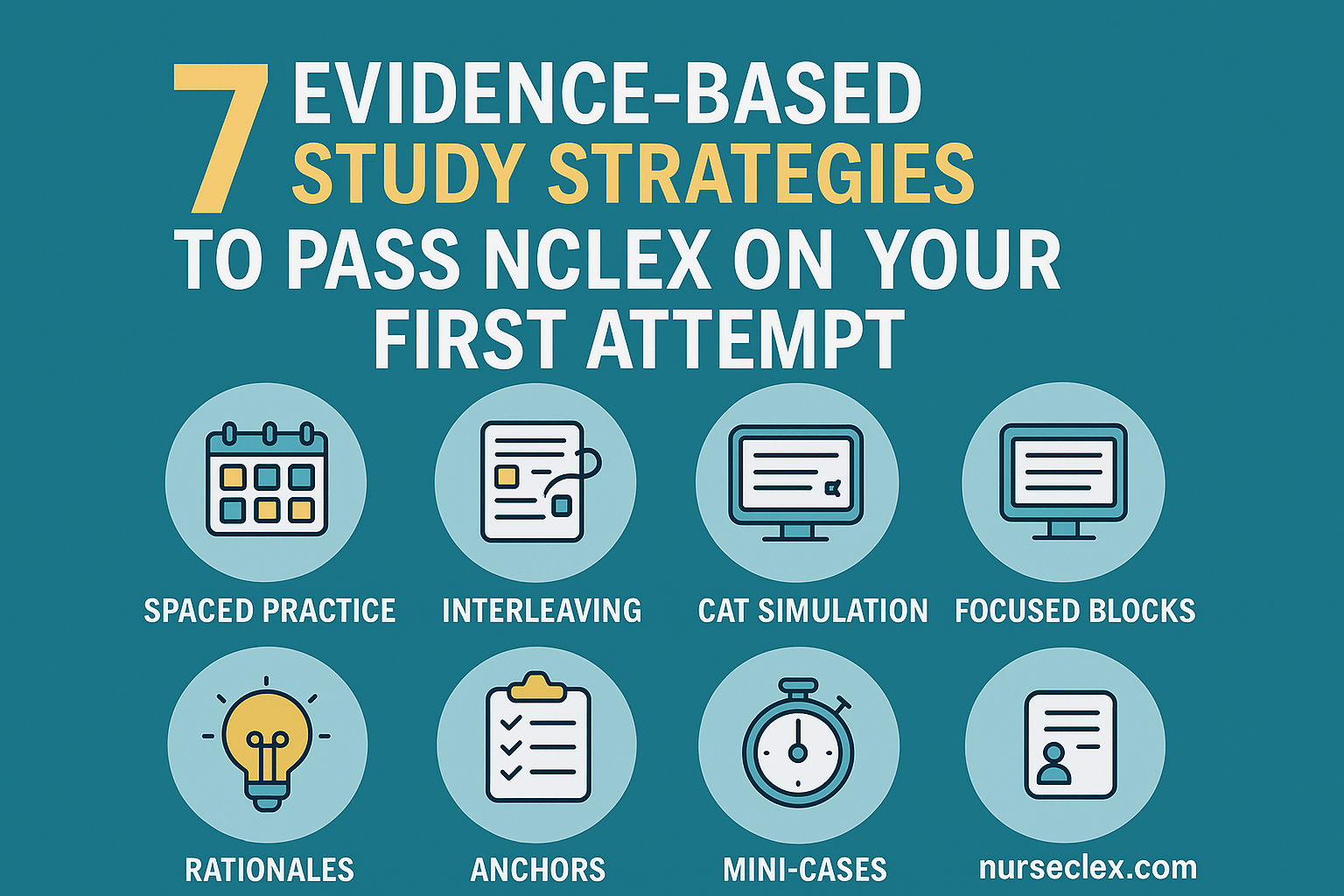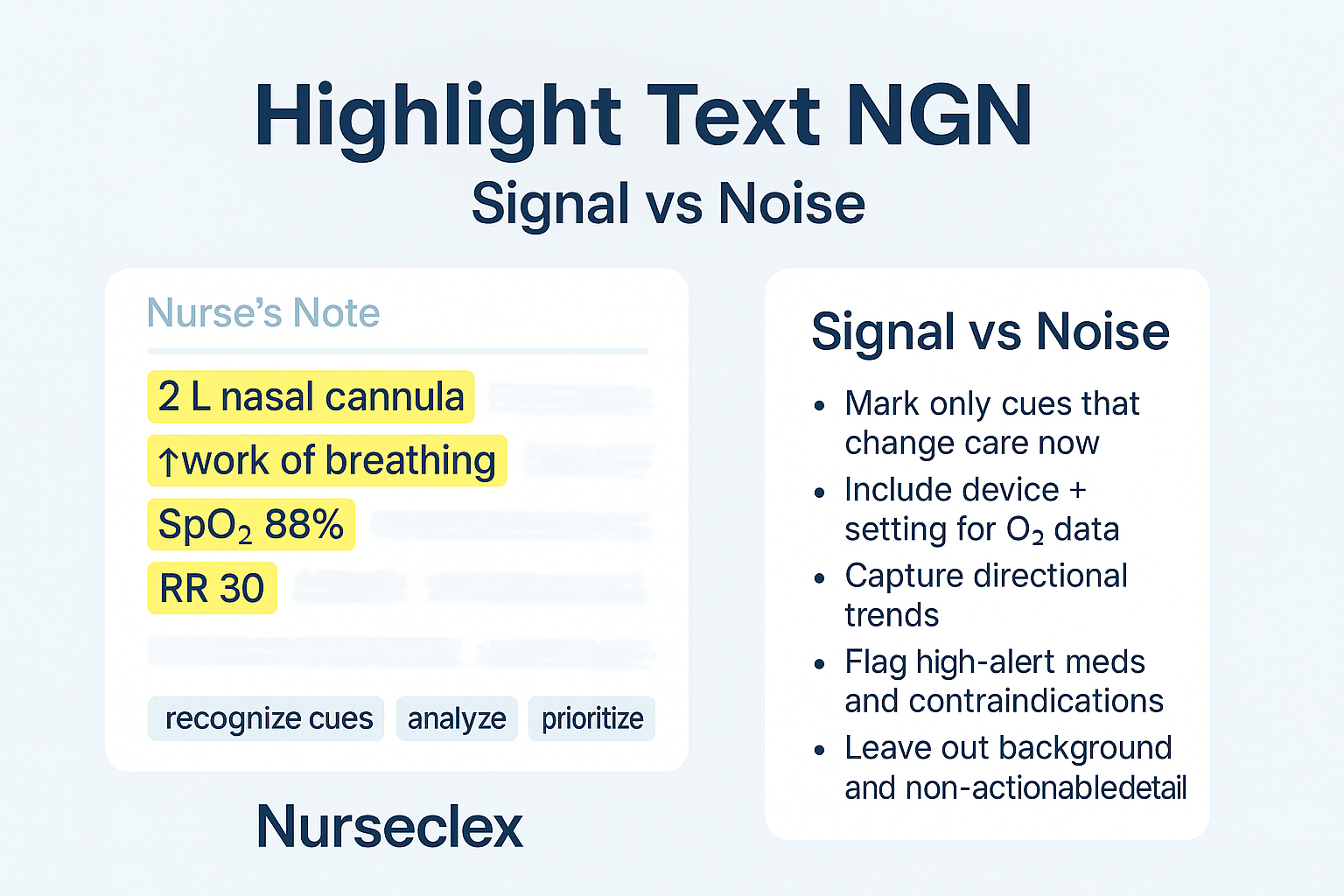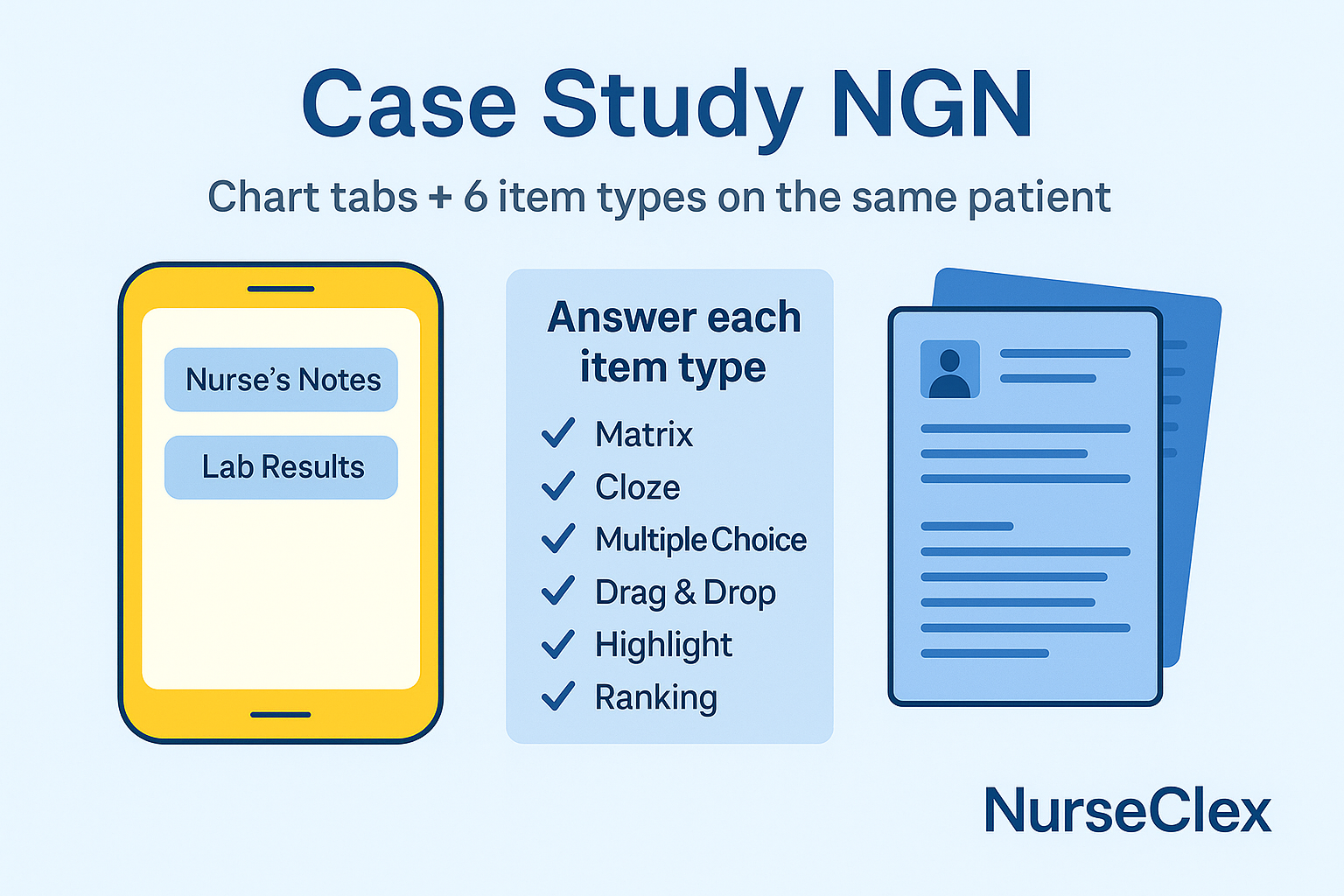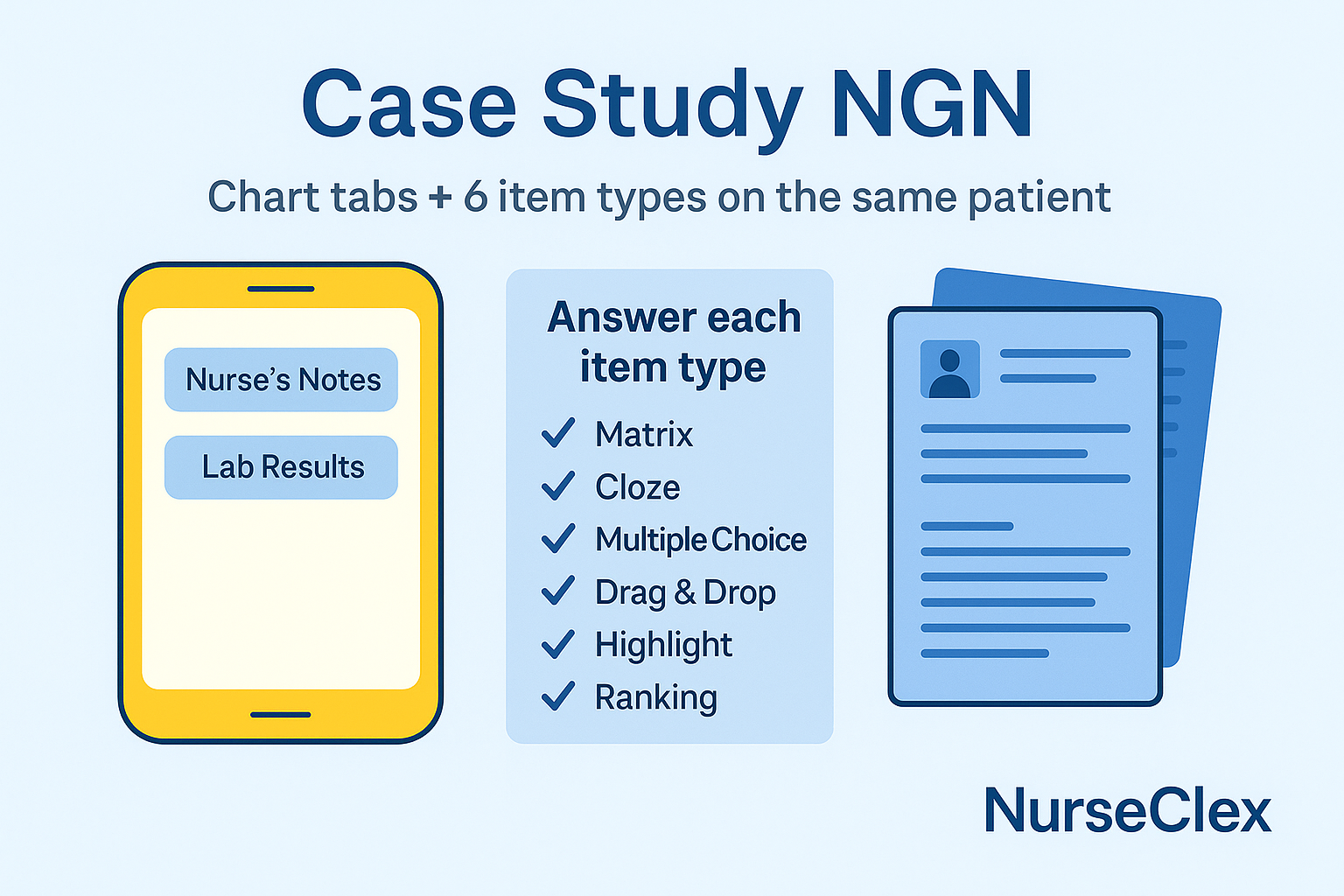What Is a Drop-Down Table NGN Item?
A drop-down table NGN item is a Next Generation NCLEX question that presents a table with multiple rows and drop-down menus. You choose the best option for each cell — and you often earn partial credit for each correct row.
New to NGN? Review Cue Recognition, Analysis, Prioritization, and how NGN partial credit works. For official exam context, see the NCSBN NGN overview.
How Drop-Down Table NGN Items Work (Quick Breakdown)
Each table row functions like a mini-clinical decision:
-
May involve assessment, intervention, medication, or monitoring
-
Each cell asks for the most accurate, safe, and priority-aligned choice
-
Partial credit is common — avoid unsafe or contraindicated options
Mindset:
✔ Think row-by-row, not column-by-column
✔ Confirm the current priority before selecting
✔ Link each choice to safety, effect, or protocol
The R.O.W.S. Method (Your 4-Step Routine)
-
R — Read the stem
Identify the primary problem: oxygenation, perfusion, neuro, infection, metabolic, etc. -
O — Omit unsafe options
Immediately remove choices that are unsafe, contraindicated, or outside the RN scope. -
W — Weigh each action
Connect interventions to:-
Desired effect
-
Monitoring target
-
Medication toxicity risk
-
Protocol parameters
-
-
S — Scan for contradictions
Prevent duplicates, mutually exclusive options, or actions that conflict with priority.
High-Scoring Patterns (Memorize These)
-
Choose specific devices/settings over vague actions
Example: Venturi 35% beats “increase oxygen.”
-
Use protocol-based language
“Check aPTT per protocol” > “Monitor labs.”
-
Monitor toxicity signs for high-alert meds
MgSO₄ → RR, DTRs, urine output
-
When two options seem correct:
Pick the safest, least invasive option first.
Worked Examples (With Tables)
Example 1 — Oxygenation (COPD Exacerbation)
Stem: COPD; SpO₂ 88% on 2 L NC, RR 30, accessory muscle use.
| Row | Prompt | Best Choice | Why |
|---|---|---|---|
| 1 | Positioning | High-Fowler’s | Improves ventilation & reduces WOB immediately |
| 2 | Device | Venturi mask 35% | Precise FiO₂ — safer for COPD |
| 3 | Monitoring | Reassess SpO₂ & RR in 5–10 min | Confirms oxygenation response |
Avoid: Humidification or “comfort” reasons — less relevant to acute priority.
Example 2 — Anticoagulation (Heparin Infusion)
| Row | Prompt | Best Choice | Why |
|---|---|---|---|
| 1 | Baseline | Verify aPTT | Required before titration |
| 2 | Safety | Keep protamine available | Reversal agent |
| 3 | Monitoring | Check aPTT per protocol | Ensures therapeutic range |
| 4 | Assessment | Inspect gums/urine/stool | Targeted bleeding checks |
Avoid: IM injections or vague “monitor closely.”
Example 3 — Preeclampsia (Magnesium Sulfate Infusion)
| Row | Prompt | Best Choice | Why |
|---|---|---|---|
| 1 | Immediate Safety | Seizure precautions | Prevents injury and airway compromise |
| 2 | Monitoring | RR, DTRs, UO | Detects magnesium toxicity |
| 3 | Medication | Antihypertensive per protocol | Controls severe BP |
Avoid: Starting with teaching — stabilize first.
Common Pitfalls (and How to Fix Them)
1. Column Hopping → Contradictions
Fix: Evaluate one row at a time with ROWS.
2. Using Background Info Instead of Current Priority
Fix: Every choice MUST relate to current assessment.
3. Selecting Vague Options
Fix: Use specific tasks with exact monitoring targets.
4. Scope of Practice Errors
Fix:
-
RN = assessment, education, IV meds
-
LPN = stable patients, routine meds
-
UAP = ADLs, vitals, positioning
Avoid assigning RN tasks to UAP.
Quick Checklist (Printable)
-
Primary priority identified
-
Unsafe/out-of-scope options eliminated
-
Each row linked to an effect, target, or toxicity
-
No contradictions or duplicates
-
Reassessment included in the plan
Mini-Drills (5-Second Picks)
-
SpO₂ drops from 90 → 88 on same device: Venturi 35%
-
Heparin started: must-have safety? Protamine available
-
MgSO₄ running: critical trio? RR, DTRs, UO
Related NGN Skills
Practice Drop-Down Table NGN With Instant Feedback
Run full simulations, earn partial credit, and see detailed rationales.
???? Create a Free Account: NurseClex — Start Practicing Now







